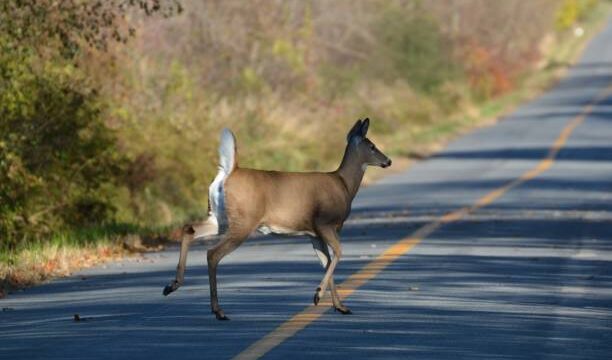The Georgia Department of Transportation (GDOT) will get a share of $125 million in grants from the Federal Highway Administration (FHWA) to improve roadway safety by preventing wildlife-vehicle accidents – of which there were at least 27 in December alone in Hall County.
The funding is available through the Wildlife Crossings Pilot Program, a new grant program in its second round of awards that was created by President Biden’s Bipartisan Infrastructure Law.
The purpose of the Wildlife Crossings Pilot Program is to improve safety for motorists and wildlife by reducing vehicle collisions with wildlife while also improving habitat connectivity and supporting the survival of threatened or endangered species. The funding supports studies and projects that construct wildlife crossings over and below busy roads, add fencing to direct animals to the crossings, and monitor performance of crossing systems.
Each year, more than one million wildlife vehicle collisions are estimated to impact motorists and wildlife in the U.S. Wildlife-vehicle collisions involving large animals result in approximately 200 human fatalities and 26,000 injuries to drivers and their passengers each year. These collisions also cost the public more than $10 billion annually. This includes economic costs, such as loss of income, medical costs, property damage, and more. Highways can threaten wildlife populations by fragmenting habitats, creating barriers to safe movement, and causing wildlife vehicle collisions.
No count on the number of such accidents in Georgia was immediately available but a search of Hall County Sheriff’s Office (HCSO) reports shows there were 27 deer-vehicle collisions investigated by the sheriff’s office in December alone. That does not include any that were reported to other law enforcement agencies in the county. Thus far, there have been no reports of deaths locally as a result of such collisions and few injuries but there was a death in Habersham County in July. UPDATE: Victim in Habersham deer/car collision dies
The fall and early winter are when most such accidents occur because that the mating season for deer and the deer are on the move as the bucks look for does with whom to mate. Another contributing factor in our area, according to the experts, is developments that eliminate deer habitat leading the animals to roam in such of suitable places to live.
EARLIER STORY. POSTED NOV. 25: State DNR: Be deer aware


